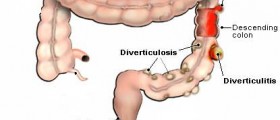
Visceral pain is the pain in the internal organs. It is the most common form of pain and can be excruciating. Visceral pain is often associated with inflammation or injury to the tissue. For instance, inflammatory bowel disease is a common cause of visceral pain.
What is Visceral Pain?
There are different types of pain. Visceral pain is the most common type of pain. It is detected by the nerves located in the soft tissues such as muscles and internal organs. Visceral pain includes wide range sensations from mild discomfort caused by indigestion to the severe feeling of pain due to renal colic. There are different forms of visceral pain that are common in women. This includes pain which arises from reproductive system such as period pain, labor pain and post menopausal pelvic pain.
However, unlike neuropathic and post-traumatic pain, both men and women experience this type of pain many times in their life. Visceral pain has been often disregarded by medical professionals until recently. Specialist like obstetricians, gynecologists, cardiologists, gastroenterologists and urologists mainly focused on diagnosis and treatment of underlying conditions associated with visceral pain. They believed that the pain will disappear once the condition is cured. However, visceral pain is now treated separately because it has been observed that the pain is not just a symptom of a disease but frequently the root of the problem.
Not all internal organs produce visceral pain. For example the liver, lungs and kidneys do not cause pain. However, people may experience pain due to abnormal functioning of these organs. On the other hand, organs like the stomach, bladder or ureters can cause agonizing pain. This is because these organs have pain receptors called nociceptors that respond to stretching, swelling and irritant chemicals. Visceral pain often indicates inflammation of an organ as some nociceptors are only stimulated by inflammation of lining of the organs.
Characteristics of Visceral Pain
Vascular pain often radiates to other areas of the body thus making it difficult to detect the source of pain. For example, cardiac ischemia is known to produce the pain in left portion of the chest, left arm and left hand. The thorax, abdomen and pelvis are major centers of visceral pain but individuals who are experiencing this pain typically cannot pinpoint exact source.
Sensitization is another characteristic of visceral pain. It refers to increased sensitivity of an organ to visceral stimulation after an injury or inflammation of the organ. For example, indigestion and cystitis do not only cause pain due to affected organs but also due to normal processes occurring in the organs such as passing food or collecting urine. Management of Visceral Pain
There are only a couple specific pain relievers for treatment of visceral pain. Fortunately, visceral pain can be managed with oipoids like codeine and morphine and other medications used for pain in general.

















Your thoughts on this
Loading...